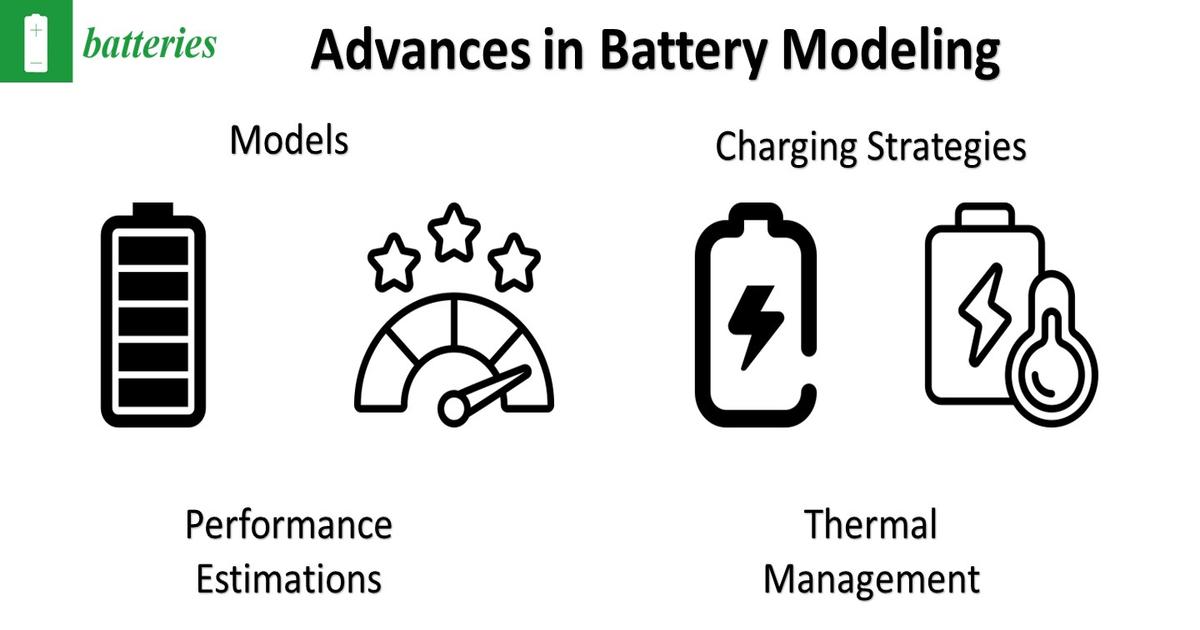- 4.8Impact Factor
- 6.6CiteScore
- 19 daysTime to First Decision
Advances in Battery Modeling: Models, Charging Strategies, Performance Estimations and Thermal Management
This special issue belongs to the section “Battery Modelling, Simulation, Management and Application“.
Special Issue Information
Dear Colleagues,
Batteries have become an essential power source in many fields, such as electric vehicles and smart grids, due to increasing environmental concerns. The lifespan and cost of batteries play a crucial role in addressing energy crises and environmental issues. The development of models that accurately predict battery life, design effective charging strategies, and assess battery performance now presents considerable challenges in both science and engineering.
This Special Issue of Batteries is open to submissions on the topic of battery numerical modeling, including battery performance modeling, state of charge and health estimation, and charging strategy optimization.
Scientists and engineers are encouraged to submit articles addressing topics in the following areas:
- Battery modeling method development, including electrochemical models, data-driven methods, and hybrid modeling approaches.
- Simulation of the charging and discharging processes for various types of batteries, including lithium-ion batteries, solid-state batteries, and second-life batteries.
- Optimization of the parameters of batteries in specific applications, i.e., electric vehicles, power grid systems, and fuel cell vehicles.
- Simulation of the battery degradation process with physical-based models or data-driven approaches.
- Charging strategy development in distinct scenarios.
- Design of thermal management, including the design of heat dissipation structure and cooling strategies.
Dr. Xuan Zhou
Dr. Rongheng Li
Guest Editors
Manuscript Submission Information
Manuscripts should be submitted online at www.mdpi.com by registering and logging in to this website. Once you are registered, click here to go to the submission form. Manuscripts can be submitted until the deadline. All submissions that pass pre-check are peer-reviewed. Accepted papers will be published continuously in the journal (as soon as accepted) and will be listed together on the special issue website. Research articles, review articles as well as short communications are invited. For planned papers, a title and short abstract (about 250 words) can be sent to the Editorial Office for assessment.
Submitted manuscripts should not have been published previously, nor be under consideration for publication elsewhere (except conference proceedings papers). All manuscripts are thoroughly refereed through a single-blind peer-review process. A guide for authors and other relevant information for submission of manuscripts is available on the Instructions for Authors page. Batteries is an international peer-reviewed open access monthly journal published by MDPI.
Please visit the Instructions for Authors page before submitting a manuscript. The Article Processing Charge (APC) for publication in this open access journal is 2700 CHF (Swiss Francs). Submitted papers should be well formatted and use good English. Authors may use MDPI's English editing service prior to publication or during author revisions.
Keywords
- battery modeling
- electrochemical models
- data-driven methods
- state of charge and health estimation
- charging strategy optimization
- thermal management

Benefits of Publishing in a Special Issue
- Ease of navigation: Grouping papers by topic helps scholars navigate broad scope journals more efficiently.
- Greater discoverability: Special Issues support the reach and impact of scientific research. Articles in Special Issues are more discoverable and cited more frequently.
- Expansion of research network: Special Issues facilitate connections among authors, fostering scientific collaborations.
- External promotion: Articles in Special Issues are often promoted through the journal's social media, increasing their visibility.
- e-Book format: Special Issues with more than 10 articles can be published as dedicated e-books, ensuring wide and rapid dissemination.

